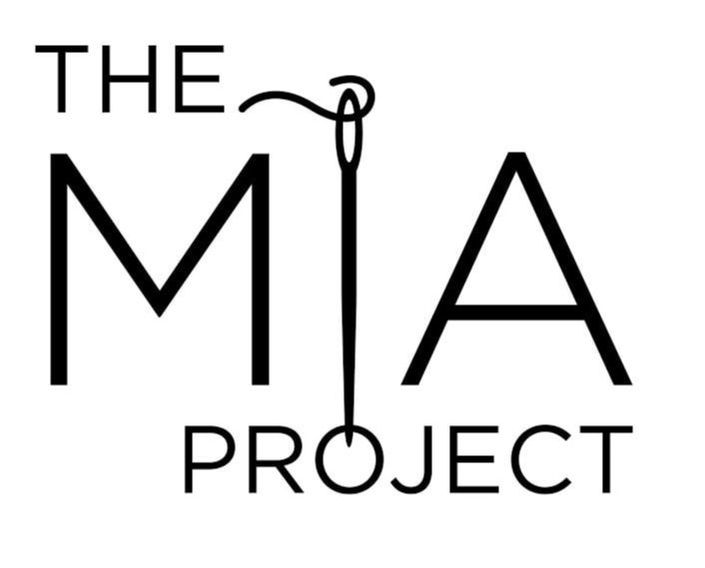|
If you've ever sewn a garment from start to finish, you most likely know of that one or multiple elements in the process that once sewn, make everything instantly come together! For me, that special moment happens when either completing the zipper, attaching both sleeves or sewing in the waistband. When sewing bottoms, the waistband is often that single component that keeps everything together, binding the rest of the design elements into a finished product. In this tutorial, I will be using a simple yet classic technique to sew a waistband to the box pleat skirt I've been working on in this recent sewalong. Attaching this particular woven waistband is especially rewarding as it provides structure and support to the deep pleating along the skirt's waistline. Needless to say, a classic waistband (like the one in this tutorial) will keep all the folds aligned properly while also visually enhancing the skirt's fullness. When adding a waistband to an edge that houses pleats or gathers, it is always a good idea to first reinforce the folds or gathers with an additional stitch so that they don't stretch or come undone during the rest of the sewing process. Although waistband construction techniques vary based on style, fabric and design, reinforcing the garment's edge is one of those rules that needs to be followed regardless.
My skirt will have a basic two piece (faced) waistband that is non-stretch (woven). The design also calls for an invisible zipper sewn into the side seam which as you'll see below, will dictate the sequence of steps for sewing this particular band. That being said, if you follow the steps in order, you should not run into any major issues. If you're anything like me, you will find the process fairly enjoyable!
0 Comments
I love on-seam pockets so much that I could sew one with my eyes closed. Simple, yet extremely functional, on-seam or in-seam pockets (whatever you want to call them) work with almost all garments without altering them aesthetically. As you'll see below, they are also very simple to sew and will elevate just about any design. I like to add my own spin on it by making the pocket bag a contrasting color or print. It's a great way to add character and a pop of color to the garment without overwhelming it! On-seam pockets are composed of two parts: the underlayer, which is sewn to the front piece of the garment, and an identical layer sewn to the back garment piece. When put together, the two layers form the pocket bag. Conventionally, these two pieces are identical in shape and are the mirror copies of each other. This facilitates the process of cutting and matching them to each seam edge. The easiest way to draft a sewing pattern for an on-seam pocket is to use your garment's front pattern piece as a guide. Using the seam that the pocket will be sewn into, sketch out the shape of the pocket bag. Mark all the appropriate notches for matching and sewing the pocket pieces later. For a full tutorial on drafting this skirt pocket pattern, check out this tutorial: How To Make A Sewing Pattern For A Skirt On-Seam Pocket. Seeing the pocket pattern being drafted should hopefully help you visualize how each piece fits into the finished clothing item.
|
The Blog:A journey into our design process, sewing tutorials, fashion tips, and all the inspiring people and things we love. Doina AlexeiDesigner by trade and dressmaker at heart. I spend most of my days obsessing over new fabrics and daydreaming new ideas. Sadie
Executive Assistant & Client Relations Manager Archives
November 2019
Categories
All
|
-
Sewing Tutorials
-
Basics
>
- Aligning Pattern Grainlines To Fabric
- Preparing Fabrics For Sewing
- Pinning Sewing Patterns To Fabric
- Placing Sewing Patterns On Fabric For Cutting
- Rotary Cutters or Fabric Scissors?
- Cutting The Sewing Patterns
- What Are Notches And How To Use Them In The Sewing Process
- Transferring Notches From Pattern To Fabric
- Transferring Seamlines to Fabric
- Staystitching
- Backstitching: A Complete Guide
- Hand Basting: A Complete Guide
- Sewing Continuous Bias Binding
- Darts >
-
Sewing Seams
>
- The Basics Of Seams And Seam Allowance
- How To Sew A Straight Seam
- Sewing Curved Seams
- Sewing Corner Seams
- Trimming And Grading Seam Excess
- Notching/Clipping Seam Allowance for Tension Release
- Sewing Topstitched Seams
- Sewing Corded Seams
- Sewing A Slot Seam
- Sewing A Gathered Seam
- Sewing Bias Seams
- Sewing Seams With Ease
- Sewing Seams With Crossing Seamlines
- Sewing Unlike Fabric Seams
- How To Iron Seams: Ironing Tools And Conventions
- Sewing With Knit Fabrics
- Understanding Stitch Length And Tension
- Sewing Unique Fabric Seams
-
Seam Finishes
>
- Seam Finishing Techniques - Overview
- Applying A Pinked Seam Finish
- Applying A Bias Bound Seam Finish
- Serging And Zigzag Seam Finishes
- Sewing A Self-Bound Seam Finish
- Sewing A French Seam Finish
- Sewing A Hong Kong Seam Finish
- Sewing A Mock French Seam Finish
- Sewing A Turned-and-Stitched Seam Finish
- Sewing Overcast Hand-Applied Seam Finishes
- Sewing A Flat Felled Seam
- Sewing A Hairline Seam Finish
-
Hem Finishes
>
- Garment Hem Finishes: Overview
- Sewing A Double Fold Hem Finish
- Sewing A Single Fold Hem Finish
- Sewing Bound Hem Finishes
- Sewing An Exposed Double Layer Bound Hem
- Sewing A Folded-Up Bound Hem with Pre-folded Binding
- Sewing A Hong Kong Hem Finish
- Sewing A Band Hem Finish
- Sewing A Bias Faced Hem Finish
- Sewing A Twill Tape Hem Finish
- Sewing A Rolled Hem Finish
- Sewing A Shaped Hem Facing
- Using Fusible Hem Tape And Webbing
- Finishing A Lace Fabric Hem
- Finishing A Leather Hem
- Sewing Faced Hem Corners
- How To Finish Lining At The Hem
- Finishing Fabric Corners by Mitering >
- Interfacing A Hemline: Lined And Unlined Examples
-
Sewing Pockets
>
- Curved Patch Pocket With Flap
- Unlined Square Patch Pockets
- Lined Patch Pockets: Two Ways
- Extension On-Seam Pockets
- Separate On-Seam Pocket
- Front Hip Pockets
- Bound Double Welt Pocket
- Double Welt Pocket With Flap
- Self-Welt Pocket (Using Single Fabric Layer)
- Slanted Welt Pocket (Hand-Stitched)
- Faced Slash Pockets: Overview >
-
Sewing Zippers
>
- Sewing Zippers: General Information
- Sewing A Centered Zipper
- Sewing A Lapped Zipper
- Sewing An Invisible Zipper
- Sewing A Fly Front Zipper
- Sewing A Closed-End Exposed Zipper (No Seam)
- Sewing An Exposed Separating Zipper
- Sewing Hand Stitched Zipper Applications
- Sewing A Zipper Underlay
- Sewing A Placket-Enclosed Separating Zipper
- Sleeveless Finishes >
-
Neckline Finishes
>
- Sewing A Neck Shaped Facing
- Sewing An All-In-One Neck Facing
- Neck And Garment Opening Combination Facings >
- Sewing A Bias Faced Neckline Finish
- Sewing A Band Neckline Finish
- Bound Neckline Finishes: Overview >
- Sewing A Semi-Stretch Strip Band Neckline
- Ribbed Neck Band And Classic Turtleneck
- Decorative Neckline Finishes >
- Finishing Facing Edges >
-
Extras
>
- A Complete Guide on Interfacing
- Sewing Bound Spaghetti Straps
- Sewing Spaghetti Straps To A Faced Neckline
- Sewing Ruffles: Overview
- Patterning And Sewing A Circle Ruffle
- Sewing A Gathered Heading Ruffle
- Sewing Double Layer Gathered Ruffles
- Sewing A Gathered Ruffle Into A Seam
- Sewing A Gathered Ruffle To A Fabric Edge
- Sewing A Fabric Surface Slit
- Sewing A Slit Seam
- Hand-Applied Straight Stitches
- Hand-Applied Blind Stitches
- Hand-Applied Overedge Stitches
- Hand-Applied Tack Stitches
- Hand-Applied Decorative Stitches
-
Basics
>
- Custom Bridal
- Custom Apparel
- About
- Blog
Services |
Company |
|



 RSS Feed
RSS Feed

